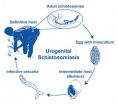(Press-News.org) Universal guidelines and improvements in technology are needed to reduce injuries and deaths from improper placement of nasogastric feeding tubes in pediatric patients, according to a comprehensive review of published literature.
The review, conducted by the New Opportunities for Verification of Enteral Tube Location (NOVEL) Work Group Project of the American Society for Parenteral and Enteral Nutrition (A.S.P.E.N.) found that while the bedside placement of a nasogastric feeding tube is a common procedure conducted by nurses, incorrect placement can have serious and potentially fatal consequences.
While an abdominal x-ray is the best way to ensure that a nasogastric feeding tube is correctly placed, most often a tube is placed at the bedside without radiographic assistance. The NOVEL Work Group Project concludes that universal best practices, including a standard approach to bedside verification of nasogastric feeding tube placement and changes in technology, can help to improve patient safety. The group's complete review titled "Nasogastric Tube Placement and Verification in Children: Review of the Current Literature," is co-published in the June issue of A.S.P.E.N.'s Nutrition in Clinical Practice and AACN's Critical Care Nurse journals.
"The challenges of insuring proper nasogastric feeding tube placement led A.S.P.E.N. to launch our NOVEL Work Group Project to identify and promote best practices and spur technology development to reduce the risk to patients," said Beth Lyman, RN, MSN, CNSC, the chair of the A.S.P.E.N. NOVEL Work Group Project and the senior program coordinator for the Nutrition Support Team at Children's Mercy Hospital in Missouri. "We want to make sure that healthcare providers are not complacent about the risks associated with this procedure and have all the information they need to improve patient safety."
The outcome of a misplaced nasogastric feeding tube is typically life-altering and psychologically devastating for the patient, the patient's family, and healthcare professionals involved. In an accompanying commentary, a parent and a nurse recount the human cost of improper nasogastric feeding tube placement.
Deahna Visscher lost her 11-day-old son to an improperly placed nasogastric feeding tube. Grant was born with a heart defect that required surgery. Only a couple of days until his discharge, Grant died as the result of a nasogastric feeding tube being placed into his lung.
An unnamed nurse recounts her experience of placing a nasogastric feeding tube into a three-week-old girl. Even though she followed correct verification procedures, the tube was not placed correctly and the patient went into respiratory distress. The nurse was so distraught over her mistake that she seriously contemplated leaving the profession permanently.
"Stories like these show that we still have work to do with providers to reduce incidences of medical errors that lead to irrevocable consequences. We believe that our efforts are vital for the health of our most vulnerable patients," added Lyman.
INFORMATION:
Nutrition in Clinical Practice (NCP) is a peer-reviewed, interdisciplinary journal that publishes articles about the scientific basis and clinical application of nutrition and nutrition support. NCP contains comprehensive reviews, clinical research, case observations, and other types of papers written by experts in the field of nutrition and healthcare practitioners involved in the delivery of specialized nutrition support. NCP is an official journal of the American Society for Parenteral and Enteral Nutrition (A.S.P.E.N.). This journal is also a member of the Committee on Publication Ethics (COPE).
The American Society for Parenteral and Enteral Nutrition (A.S.P.E.N.) is dedicated to improving patient care by advancing the science and practice of nutrition support therapy and metabolism. Founded in 1976, A.S.P.E.N. is an interdisciplinary organization whose members are involved in the provision of clinical nutrition therapies, including parenteral and enteral nutrition. With more than 6,000 members from around the world, A.S.P.E.N. is a community of dietitians, nurses, nurse practitioners, pharmacists, physicians, scientists, students, and other health professionals from every facet of nutrition support clinical practice, research, and education. For more information about A.S.P.E.N., please visit http://www.nutritioncare.org.
New guidelines and technology needed for placement of feeding tubes in pediatric patients
2014-05-21
ELSE PRESS RELEASES FROM THIS DATE:
New, fossil-fuel-free process makes biodiesel sustainable
2014-05-21
EAST LANSING, Mich. — A new fuel-cell concept, developed by an Michigan State University researcher, will allow biodiesel plants to eliminate the creation of hazardous wastes while removing their dependence on fossil fuel from their production process.
The platform, which uses microbes to glean ethanol from glycerol and has the added benefit of cleaning up the wastewater, will allow producers to reincorporate the ethanol and the water into the fuel-making process, said Gemma Reguera, MSU microbiologist and one of the co-authors.
"With a saturated glycerol market, traditional ...
Risky alcohol use in male-dominated industries
2014-05-21
New Rochelle, NY, May 21, 2014—The workplace can provide an ideal environment to implement support, well-being, and testing interventions aimed at reducing risky alcohol use among men. By targeting male-dominated industries, in particular, alcohol screening and prevention efforts may be effective in reducing alcohol use, according to a Review article in Journal of Men's Health, a peer-reviewed publication from Mary Ann Liebert, Inc., publishers. The article is available free on the Journal of Men's Health website.
A team of Australian researchers led by Nicole Lee, ...
Phase III clinical trial shows image fusion-guided biopsy significantly improves accuracy of prostate
2014-05-21
NEW HYDE PARK, NY – A recent study by investigators from LIJ Medical Center demonstrated that using magnetic resonance imaging (MRI) in men with an elevated prostate specific antigen (PSA) resulted in a prostate cancer detection rate that was twice as high as data reported in the March 1999 Prostate journal that analyzed men undergoing the standard 12-core biopsy with an elevated PSA. Physicians in the recent trial used a targeted approach to evaluate prostate cancer that combines MR imaging and transrectal ultrasound fusion guided prostate biopsy.
Given the limitations ...
Carnegie Mellon, Microsoft Research automate privacy compliance for big data systems
2014-05-21
PITTSBURGH—Web services companies, such as Facebook, Google and Microsoft, all make promises about how they will use personal information they gather. But ensuring that millions of lines of code in their systems operate in ways consistent with privacy promises is labor-intensive and difficult. A team from Carnegie Mellon University and Microsoft Research, however, has shown these compliance checks can be automated.
The researchers developed a prototype automated system that is now running on the data analytics pipeline of Bing, Microsoft's search engine. According to ...
Funny River Fire, Alaska
2014-05-21
According to the Alaskan Division of Forestry the Funny River fire was very active overnight (May 20) because of low humidity. Currently the fire is estimated to be near 7,000 acres and has reached Tustumena Lake. It is spreading east and west along the shore, is 10 miles long, and is about a mile wide with broadening at the lake shore. There have been no evacuations or reports of any structures lost.
Early this morning (May 21), flame lengths of 125 feet with erratic fire behavior were reported. Winds for today are forecasted to remain out of the north keeping the fire ...
A faster track to the tools that track disease
2014-05-21
Radioactivity is usually associated with nuclear fallout or comic-book spider bites, but in very small amounts it can be a useful tool for diagnosing diseases.
Small molecules containing a radioactive isotope of fluorine called "18F radiotracers" are used to detect and track certain diseases in patients. Once injected into the body, these molecules accumulate in specific targets, such as tumors, and can be visualized by their radioactive tag on a positron emission tomography (PET) scan. The 18F tags quickly decay so no radioactivity remains after about a day.
But there ...
PMS may spell menopause symptoms later -- but not hot flashes
2014-05-21
CLEVELAND, Ohio (May 21, 2014)—Having premenstrual syndrome (PMS) before menopause does not mean women will be troubled by hot flashes afterward. But they may face more menopause complaints other than hot flashes, such as trouble with memory and concentration, finds a new study published online in Menopause, the journal of The North American Menopause Society (NAMS).
The research team at the Helsinki University Central Hospital and Folkhälsan Research Institute in Helsinki, Finland, are the first to show a link between PMS and a worse quality of life after menopause. They ...
Scientist uncovers links connecting environmental changes with spike in infectious disease
2014-05-21
National Museum of Natural History scientist Bert Van Bocxlaer and an international team of researchers revealed that anthropogenic changes in Africa's Lake Malaŵi are a driving force behind the increase of urogenital schistosomiasis, a debilitating tropical disease caused by parasitic flatworms. Scientists estimate that 250 million people are affected by schistosomiasis worldwide, and 600 million more are at risk of contracting it. In some villages along the shorelines of Lake Malaŵi, 73 percent of the people and up to 94 percent of the schoolchildren are infected ...
Scaly gem discovered in South American cloudforests
2014-05-21
Field and laboratory work by Omar Torres-Carvajal from Museo de Zoología QCAZ, Pontificia Universidad Católica del Ecuador, and his former undergraduate student Simón Lobos has resulted in the discovery of a gem-looking new species of shade lizard from the cloudforests in northwestern Ecuador. This region is part of the 274,597 km2 Tumbes-Chocó-Magdalena hotspot that lies west of the Andes. The study was published in the open access journal ZooKeys.
Shade lizards (genus Alopoglossus) are widely distributed across tropical South America. They differ from most other lizards ...
Shattering past of the 'island of glass'
2014-05-21
A tiny Mediterranean island visited by the likes of Madonna, Sting, Julia Roberts and Sharon Stone is now the focus of a ground-breaking study by University of Leicester geologists.
Pantelleria, a little-known island between Sicily and Tunisia, is a volcano with a remarkable past: 45 thousand years ago, the entire island was covered in a searing-hot layer of green glass.
Volcanologists Drs Mike Branney, Rebecca Williams and colleagues at the University of Leicester Department of Geology have been uncovering previously unknown facts about the island's physical history.
And ...






